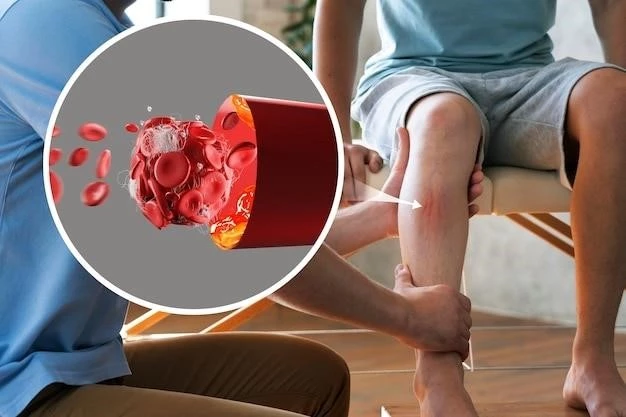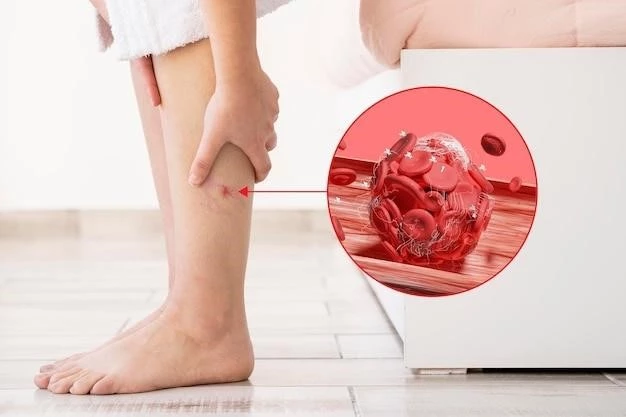Deep Vein Thrombosis
I. Introduction
Deep vein thrombosis (DVT) is a serious medical condition characterized by the formation of blood clots in the deep veins of the body, commonly in the legs. These clots can pose a risk of complications such as pulmonary embolism if they break free and travel to the lungs. Understanding the causes, symptoms, diagnosis, treatment options, and prevention strategies for DVT is crucial in managing and mitigating its impact on individuals’ health.
II. Risk Factors
Several factors can contribute to the development of deep vein thrombosis (DVT). Common risk factors include prolonged immobility, such as during long flights or bed rest after surgery, inherited blood clotting disorders, obesity, smoking, certain medications like hormone replacement therapy or birth control pills, and conditions like cancer or heart disease. Additionally, age, family history of DVT, and pregnancy increase the likelihood of developing this condition. Understanding these risk factors is essential in identifying individuals who may be predisposed to DVT and implementing appropriate preventative measures.
III. Symptoms
Deep vein thrombosis (DVT) can manifest with various symptoms, although some individuals may not experience any signs initially. Common symptoms include swelling, pain or tenderness in the affected leg, warmth and redness over the vein, and skin discoloration. In more severe cases, DVT can lead to complications like pulmonary embolism, characterized by sudden shortness of breath, chest pain, and coughing up blood. It is vital to recognize these symptoms promptly and seek medical attention to prevent potential serious consequences.
IV. Diagnosis
Diagnosing deep vein thrombosis (DVT) typically involves a combination of physical examination, medical history review, and diagnostic tests. Physicians may perform a duplex ultrasound to visualize blood flow and detect clots in the affected veins. Other imaging tests like venography, CT scan, or MRI can provide detailed images of the veins to confirm the presence of a clot. Blood tests, such as D-dimer test, may also be useful in assessing the likelihood of DVT. Prompt and accurate diagnosis is crucial to initiate appropriate treatment and prevent potential complications associated with DVT.
V. Complications
Deep vein thrombosis (DVT) can lead to serious complications if not promptly treated. The most concerning complication is pulmonary embolism, where a blood clot breaks loose and travels to the lungs, potentially causing life-threatening consequences. Chronic complications of DVT may include post-thrombotic syndrome, where long-term damage to the veins results in pain, swelling, and skin changes. In severe cases, recurrent DVT episodes can lead to venous ulcers or chronic venous insufficiency. Preventative measures and timely management are essential in reducing the risk of these complications associated with DVT.
VI. Treatment Options
Treatment for deep vein thrombosis (DVT) aims to prevent the clot from growing, reduce the risk of pulmonary embolism, and alleviate symptoms. Common treatment approaches include anticoagulant medications to thin the blood and prevent new clots, thrombolytic therapy to dissolve existing clots quickly, and the use of compression stockings to reduce swelling and improve blood flow. In some cases, procedures like thrombectomy or placement of a vena cava filter may be necessary to address severe clots. Patients with DVT should follow their healthcare provider’s recommendations closely to effectively manage the condition and prevent complications.
VII. Prevention Strategies
Preventing deep vein thrombosis (DVT) involves adopting various strategies to reduce the risk of blood clots formation. Regular physical activity, especially leg exercises during long periods of immobility, is crucial. Maintaining a healthy weight, avoiding smoking, and managing underlying conditions like hypertension or diabetes can also lower the risk of DVT. For individuals at higher risk, the use of compression stockings and anticoagulant medications as prescribed by a healthcare provider can be beneficial. Additionally, staying hydrated, avoiding excessive alcohol consumption, and discussing travel-related risks with a doctor before long trips are important preventive measures.
VIII. Prevention Strategies ― Continued
Continuing prevention of deep vein thrombosis (DVT) involves additional strategies to minimize the risk of clot formation. Avoiding sitting or standing for prolonged periods and taking breaks to move around is beneficial in promoting blood circulation. Elevating the legs when sitting or lying down can help reduce the pressure on the veins. Maintaining a balanced diet rich in fruits, vegetables, and whole grains can support overall cardiovascular health and decrease the likelihood of DVT. Individuals should also be educated about the signs and symptoms of DVT, emphasizing the importance of seeking medical attention promptly if any concerning symptoms arise.
IX. Conclusion

In conclusion, deep vein thrombosis (DVT) is a significant medical concern that can lead to severe complications if left untreated. Recognizing the risk factors, symptoms, and timely diagnosis of DVT are essential in preventing adverse outcomes. Treatment options aim to mitigate clot formation and manage symptoms effectively. Embracing preventative strategies, including physical activity, lifestyle modifications, and medical interventions when necessary, is vital in reducing the incidence of DVT; By implementing these prevention strategies diligently, individuals can safeguard their vascular health and lower the risk of developing DVT.
